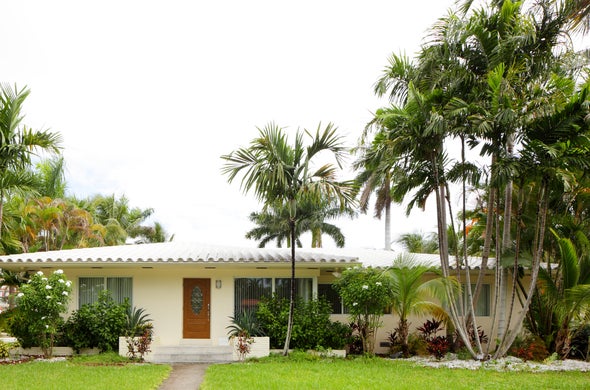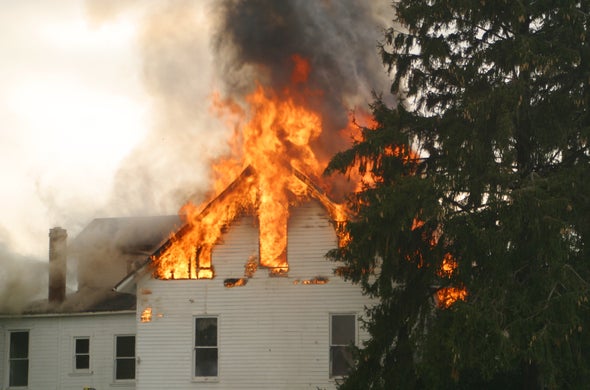Why you'll love Kin
From small claims to disasters, we're here to help you recover quickly.
Here to help
We reach out before and after major weather events to make sure you’re okay — and to assist if you need to file a claim.
24/7 claims support
Easily file a claim over the phone with a member of our support team or online in your Customer Portal.
5-star care
Our licensed insurance experts are available to help via email, phone, or live chat.
What does homeowners insurance cover in Louisiana?
Rest easy knowing your coverage protects what matters most.
Dwelling coverage
for the actual structure of your home, inside and out.
Other structures
for things like your detached garage or shed.
Personal property
for your personal belongings that make your house a home.
Loss of use
for additional living expenses when a covered loss forces you to temporarily relocate.
Personal liability
if you accidentally cause someone bodily injury or property damage.
Medical payments
if a guest is injured on your property.
Discounts available in Louisiana
The average cost of home insurance has increased to $6,939 per year in Louisiana, but you can save money by protecting your home, avoiding damage, and selecting sustainable options.

New home buyer - if you’re purchasing a home for the first time.
IBSH designation - for fortifying your home against disasters.
Claims-free - for keeping your home safe over the years.
We've got Louisiana covered
We help Louisianans find coverage across the entire Pelican State, including in these cities:
- Baton Rouge
- Bossier City
- Bossier City
- Kenner
- Lafayette
- Lake Charles
- Metairie
- Monroe
- New Orleans
- Shreveport
Learn more about home insurance with Kin
Common questions about Louisiana home insurance
What’s the average cost of home insurance in Louisiana?
The average cost of Louisiana home insurance premiums is $6,939 per year, according to the latest data from the Consumer Federation of America. That makes Louisiana the second-most expensive state for home insurance in the U.S. (behind only Florida), and 110% higher than the national average of $3,303, due to its high risk of natural disasters like hurricanes and severe thunderstorms. However, the cost of your premium depends on your home’s exact location and other characteristics.
What factors affect home insurance rates in Louisiana?
Several factors can impact the cost of home insurance in Louisiana. To determine your premium, an insurer will consider:
-
Property’s replacement cost. The cost of rebuilding your home to its prior state with similar quality materials.
-
Hurricanes and other weather risks. The increased frequency and severity of natural disasters in Louisiana directly affect premiums. Homes in high-risk areas, such as those along the coast, are generally more expensive to insure.
-
The age and composition of your home. Older homes or homes with older roofs typically cost more to insure. Likewise, houses built with more expensive or rarer materials will generally have higher insurance costs.
-
Your credit history. Home insurance companies in Louisiana can use your credit-based insurance score to set your rate. If you have strong credit, you may see lower premiums. Poor credit can lead to higher premiums.
-
Claims history. Making numerous claims over a relatively short period, such as 3 to 5 years, can result in higher premiums. You may also see higher premiums if several claims were associated with the property, even if they predate your ownership.
-
Your ZIP code. Even homes in the same state, city, or county can have different rates, as insurers assess geographical risks, like crime, when determining premiums.
-
Policy details. The amount and type of coverage you have, as well as the deductible you choose, will affect your rate.
-
Credit score. Insurers in Louisiana can use your insurance-based credit score to determine your rate. A low score may lead to higher premiums.
How much home insurance do I need in Louisiana?
How much home insurance you need will depend on several factors, including your property, risk tolerance, and any lending requirements you may have. However, it’s generally recommended that you carry the following:
-
Dwelling insurance. This part of your policy pays to repair or rebuild your home's structure. Consider insuring your home for 100% of the replacement cost or the amount it would cost to rebuild if it were destroyed.
-
Other structures coverage. Usually set at a minimum of 10% of your dwelling limit, this coverage protects detached structures on your property, such as sheds or garages. Your exact needs may differ.
-
Personal property coverage. Helps replace or repair any damaged or stolen personal belongings. Personal property coverage limits are frequently set to at least 50% of your dwelling coverage. Your exact coverage needs will depend on the combined value of your belongings.
-
Loss of use coverage. Commonly set at 20% of your dwelling coverage limit, this helps cover living expenses, like meals or lodging, if your home becomes uninhabitable after a covered event.
-
Personal liability insurance. You should carry enough liability insurance to protect your assets, including real estate and financial accounts, should you be sued after a covered incident. Consider carrying at least $100,000 to $300,000 in coverage. Higher limits may be appropriate based on your assets and risk exposure.
-
Medical payments to others. Generally offers $1,000 to $5,000 in coverage for minor guest injuries that occur on your property, regardless of fault. Consider the maximum if you have added risks, such as a swimming pool or trampoline.
What does home insurance not cover in Louisiana?
Most Louisiana homeowners insurance policies exclude or provide limited coverage for the following:
-
Flood damage
-
Earthquake or sinkhole damage
-
Wear and tear
-
Most cases of mold or rot
-
Intentional acts by the policyholder or covered household members
-
Damage caused by pests or animals
Note: Coverage limits and exclusions can vary by policy, insurer, and state. Always check with your insurer or review your policy documentation for complete coverage details, including exclusions.
What additional coverages should a homeowner consider in Louisiana?
The policies we offer already include hurricane wind coverage, which covers against wind damage caused by hurricanes. In addition, you may want to consider the following coverage:
-
Flood insurance. Home insurance policies in Louisiana do not cover flood damage. Consider adding a flood insurance endorsement or purchasing stand-alone coverage, especially if your home is in a flood zone.
-
Water backup coverage. Overburdened sewers or a failed sump pump can cause water to back up into your home. This optional coverage helps pay for losses caused by related events.
-
Extended replacement cost coverage. Labor and material costs can surge after a widespread natural disaster, such as a hurricane or flood. This endorsement extends your dwelling coverage limit to help cover the unexpected increase in repair or rebuilding costs after a covered loss.
-
Ordinance or law coverage. After a covered loss, this endorsement will help pay for any additional repairs needed to get the damaged part of your home up to current building codes. Standard home insurance policies don’t typically cover the extra cost. This endorsement is especially valuable for older homes or those in parishes with strict rebuilding regulations.
-
Replacement cost coverage for personal property. Most policies offer actual cash value (ACV) coverage for personal property, meaning claim payouts reflect the depreciated value of damaged or stolen property. This policy upgrade ensures you’re reimbursed for the full cost to replace damaged or stolen belongings (minus any deductibles) with new items, without depreciation.
Is home insurance required in Louisiana?
No. Home insurance is not required by law in the state of Louisiana. However, if you have a mortgage on your home, the lender will most likely require you to carry a certain amount of home insurance coverage until the loan balance is paid in full.
Even though home insurance isn’t required, carrying a policy is often a wise financial decision. If your property is damaged or destroyed and you don’t have home insurance, you’ll likely need to pay out of pocket to repair, rebuild, or replace your property and belongings.













